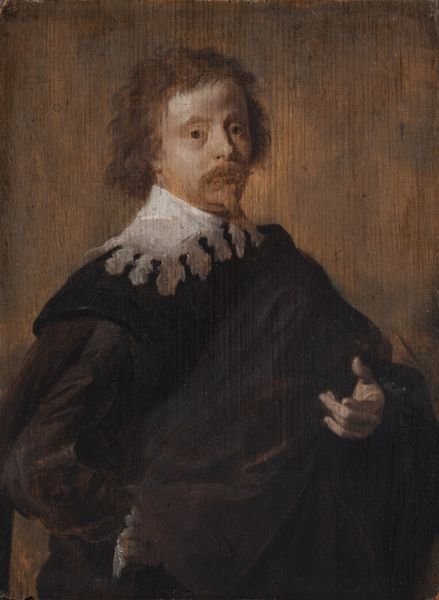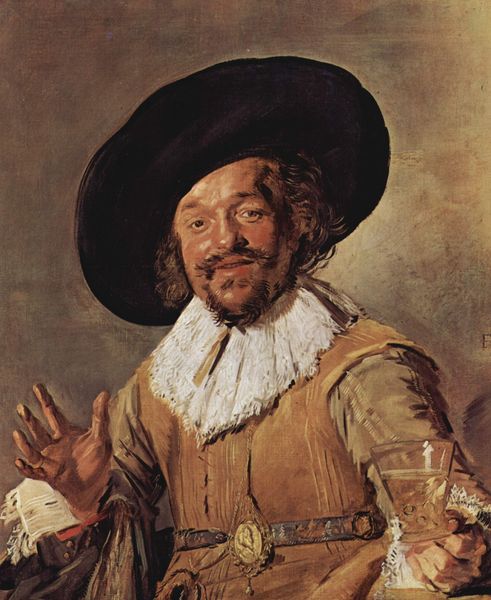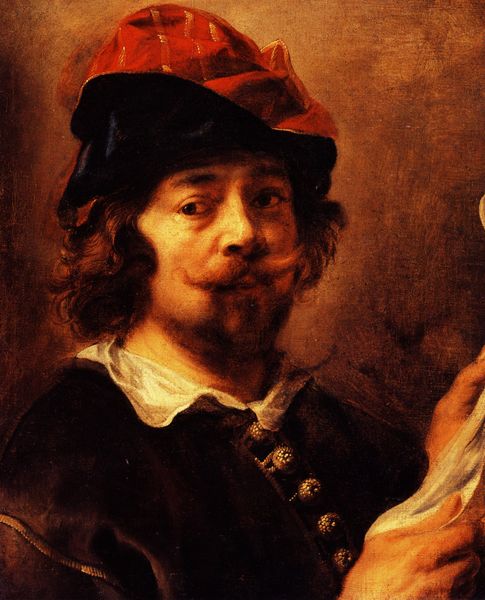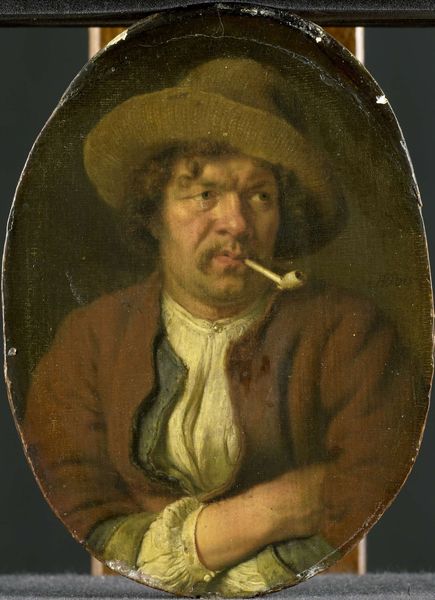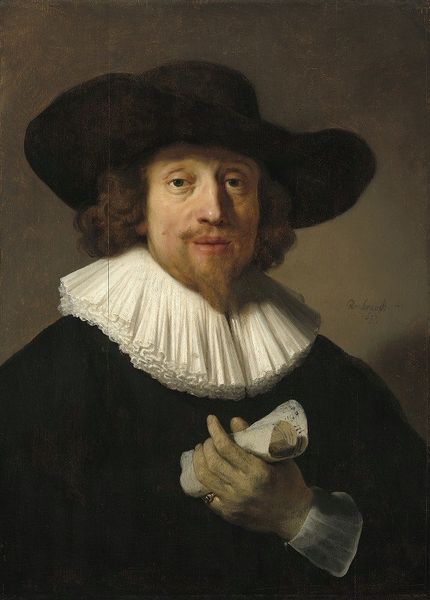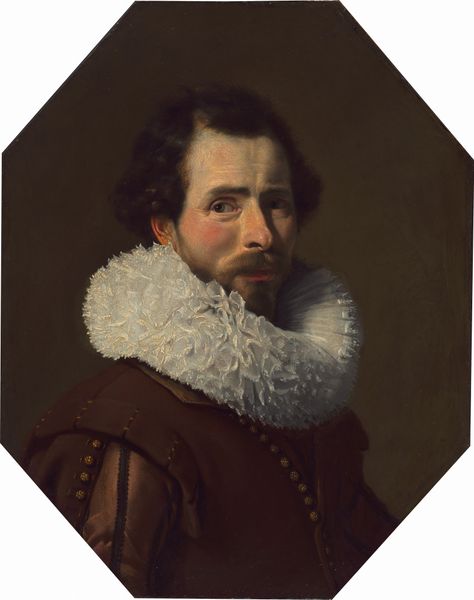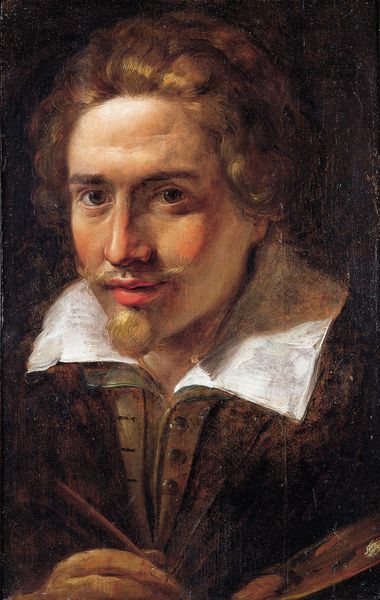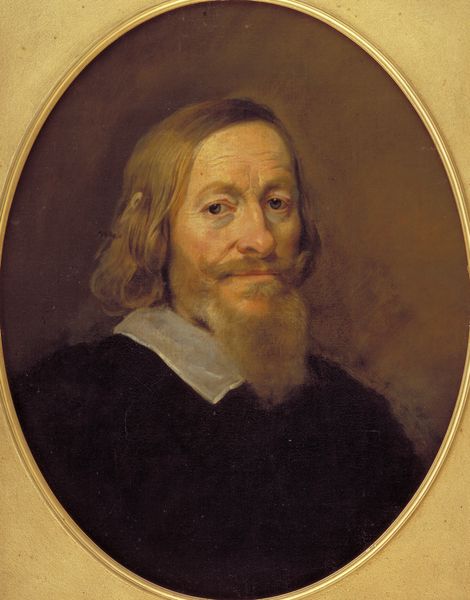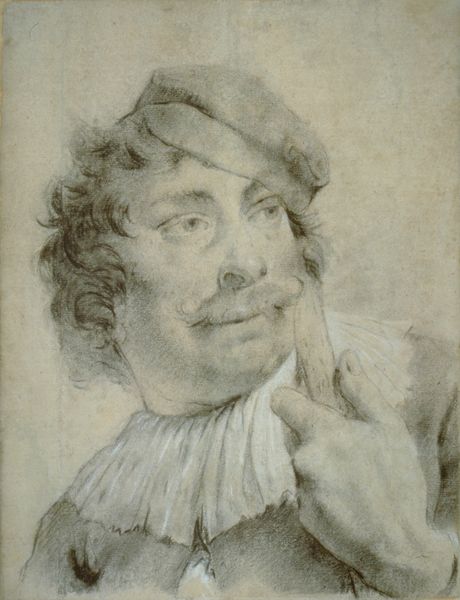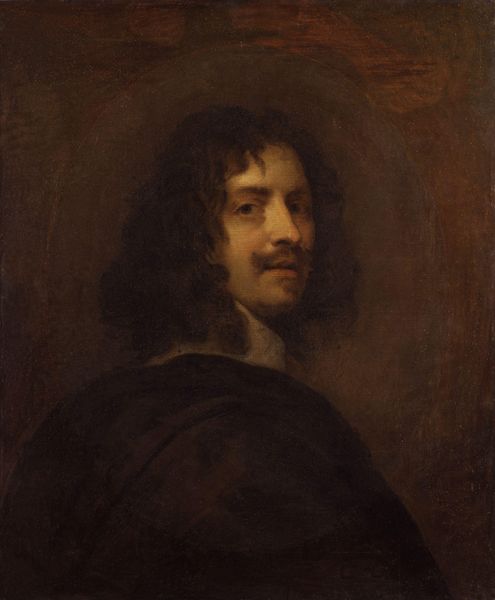
painting, oil-paint
#
portrait
#
baroque
#
dutch-golden-age
#
painting
#
oil-paint
#
figuration
#
oil painting
#
genre-painting
Dimensions: 24 x 19 cm
Copyright: Public domain
Editor: This painting, "Jan Davidszoon de Heem," dating back to 1633, is currently housed in the Rijksmuseum. Created with oil paint, it features a man smoking a pipe. It almost feels like a scene caught candidly. What stands out to you when you look at it? Curator: The most arresting element for me is the pipe itself. Consider its symbolism – the ephemeral smoke, the transient pleasure. What might that represent in the broader context of 17th-century Dutch culture? It invites reflection on themes of mortality and the fleeting nature of earthly delights, ideas very present in the vanitas paintings of the period. Editor: That's a really interesting take. I was focusing on his expression; it's quite introspective. Curator: Exactly. His gaze directs us to question what's on his mind. The feathered beret was a symbol of status and perhaps rebellion in artistic circles, especially in portraiture. Could it signify a Bohemian lifestyle, embracing individuality, separate from the bourgeois conventions? What details point to his profession or position in society? Editor: I see the gold chain, perhaps indicating wealth or status, but it could also represent his affiliation to some kind of group, right? Curator: Precisely! And consider the interplay of light and shadow—the *chiaroscuro*—emphasizes both the figure's form and this inherent duality of meaning embedded within the seemingly simple activity of smoking. It also creates an element of theatricality. Is he performing for us, or lost in thought? Editor: I hadn’t considered how much symbolism a simple portrait could contain. It makes me see these older portraits in a completely new light. Curator: It's like unlocking a secret language, isn't it? Looking at the symbols and the person represented also gives insight into ourselves.
Comments
No comments
Be the first to comment and join the conversation on the ultimate creative platform.
